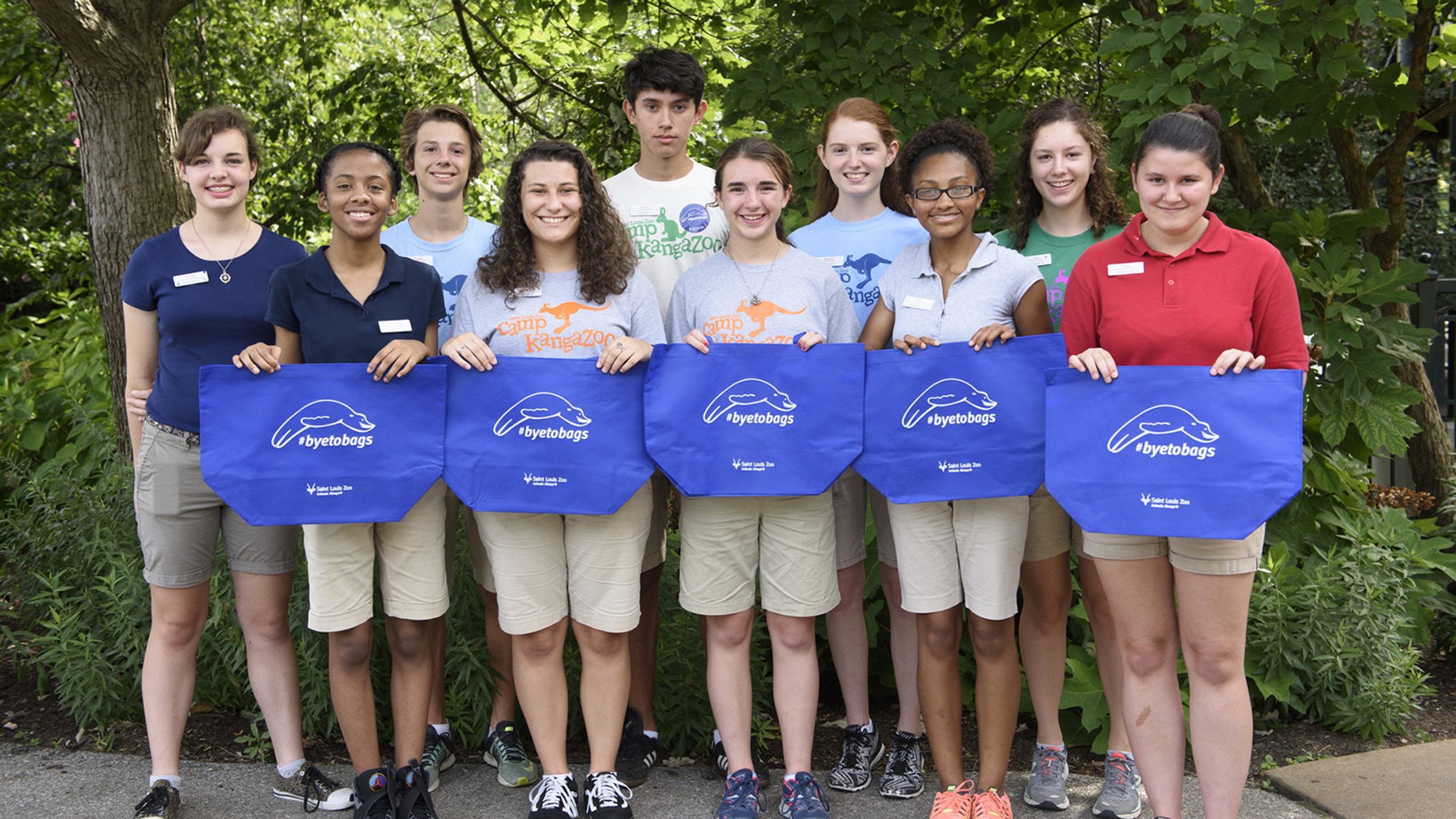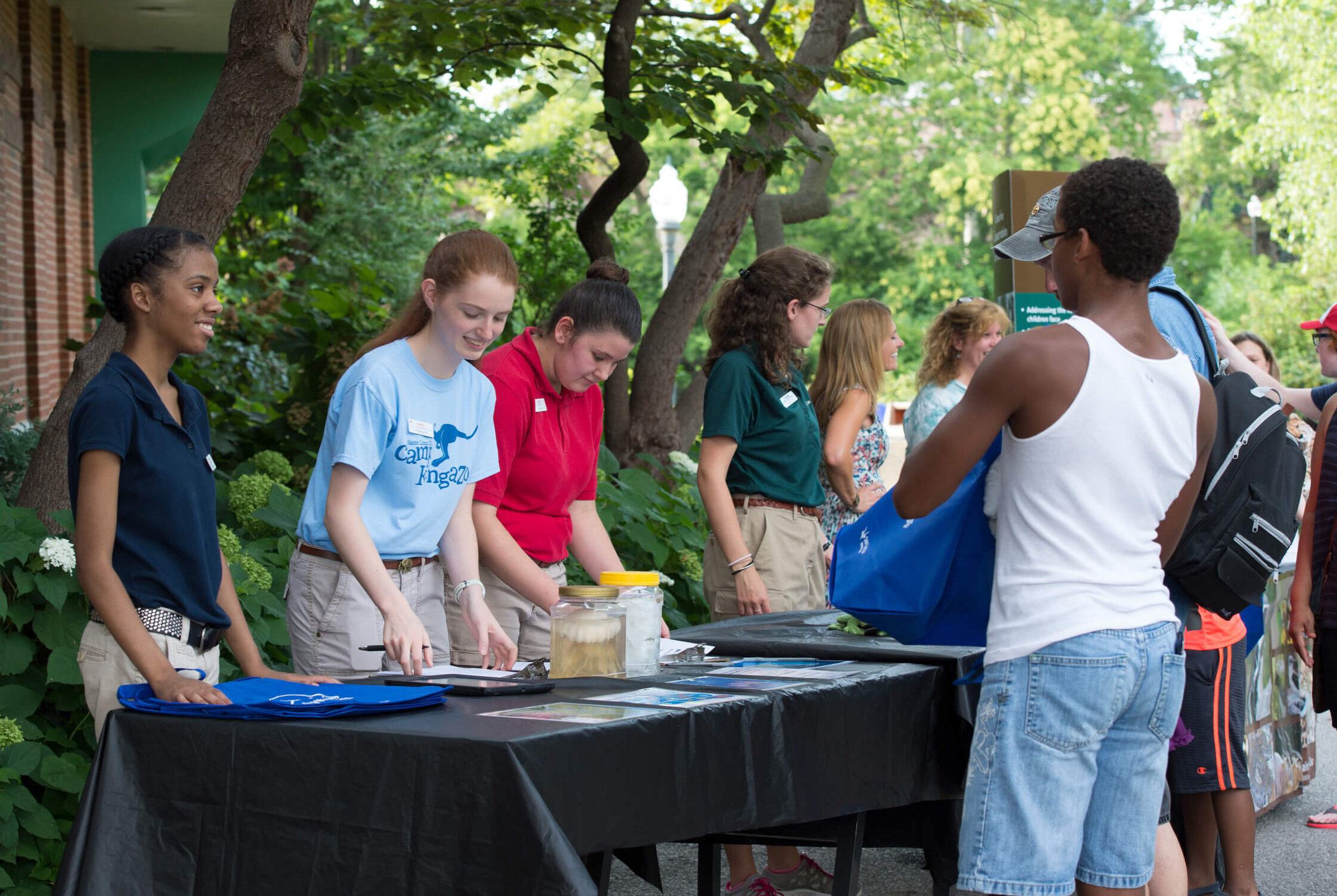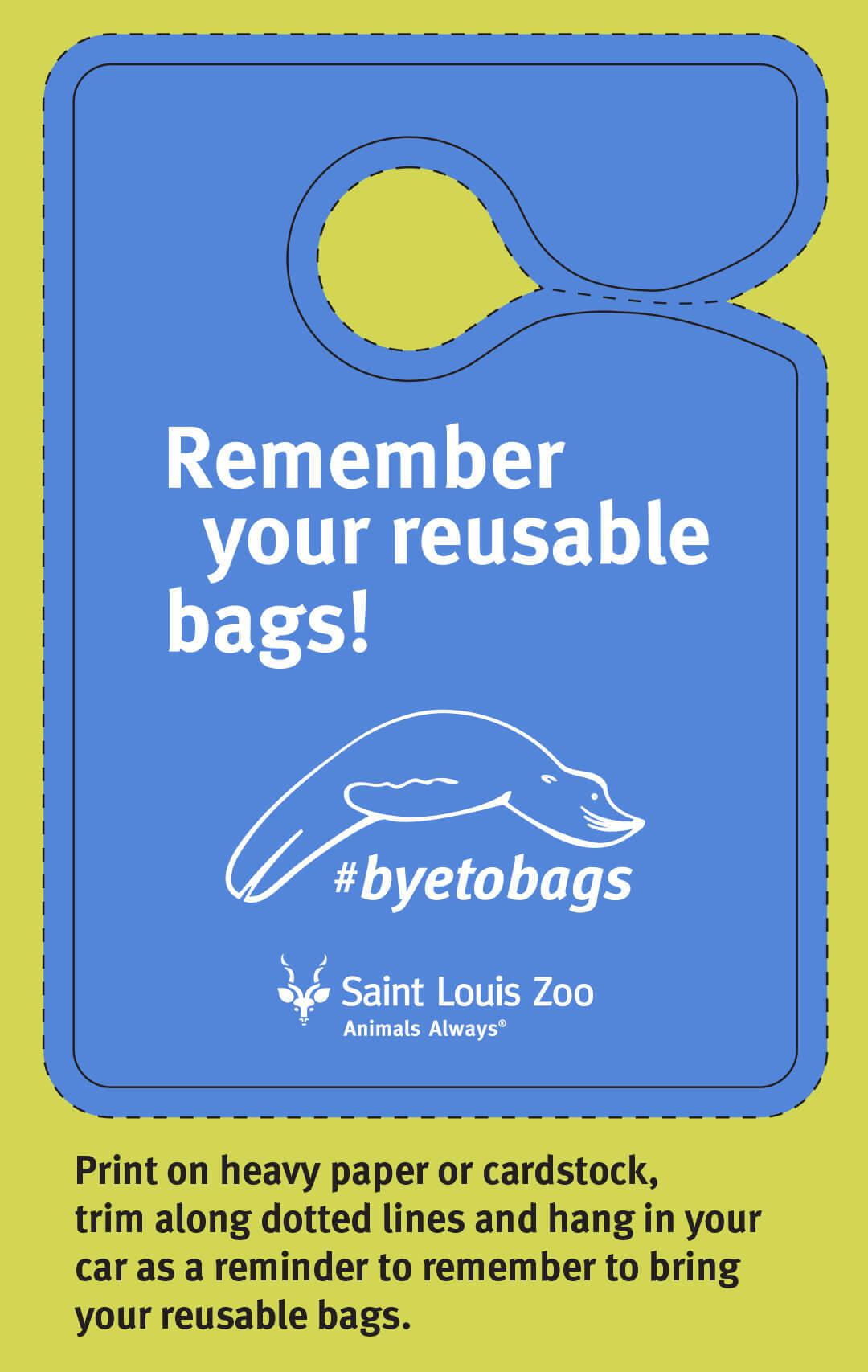
#byetobags
Switch to Reusable Bags to Help Save Wildlife

Take the pledge
The Zoo has created the #byetobags pledge to come together to protect wildlife from the dangers of plastic pollution. The average family can keep 1,500 plastic bags from being used each year by switching to reusable bags! As of December 1, 2021, over 14,000 people have taken the #byetobags pledge to switch to reusable bags and are saving between 140,000 and 410,000 plastic bags from being used each week! Join us and help this number grow!

Remember Your Reusable Bags
Do you sometimes forget your reusable bags, leaving them in the car or at home? Here are some tips for remembering your bags and making it a habit:
- Take the #byetobags pledge and make a commitment to yourself to remember your reusable bags.
- Use the #byetobags reminder tags! These tags can hang in a rearview mirror, on a door handle, or wherever you need a reminder. (Print your own or look for them at Sea Lion Sound this summer.)
- Leave your bags by the door or in the passenger seat when you drive.
- Designate a family member or friend to always check for your bags before you head out.
- Try to shop at places that offer incentives for bringing your own bags, or at stores that don’t carry plastic bags at all.
- Remind yourself of the wildlife you are helping when you use reusable bags!
- Carry reusable bags that fold up into convenient travel sizes, so you have a bag wherever you go!
Frequently Asked Questions
The #byetobags campaign was designed and organized by Zoo ALIVE teen volunteers in January 2016 through a partnership with The Ocean Project. Subsequent support for the campaign has been provided by generous donors to the Saint Louis Zoo. The teens chose plastic bags to be the focus of the campaign after researching the negative effects of plastic on many species of animals. Their goal was to highlight our ability to impact ocean health, even from the Midwest, through simple, solution-oriented action—using reusable bags instead of plastic.
Eating plastic bags can make animals sick and can often be lethal. In particular, a plastic bag floating in water resembles a jellyfish, which is a favorite food of sea turtles. Humans might be able to tell the difference, but sea turtles can’t, and they will accidentally eat plastic bags that find their way into the ocean.
Sometimes an animal doesn’t have to directly ingest plastic for plastic to get in its system. In the oceans, tiny pieces of plastic (microplastics) are eaten by plankton, which are then eaten by small fish, which are eaten by larger fish, which are eaten by marine mammals, sharks, turtles and others. This is also a problem for humans, who may eat animals that have plastic inside of them. Eventually plastic works its way across the food web where it biomagnifies in the animals that are highest in the web.
Plastic bags can also be harmful to animals if they get entangled or stuck in a bag, as the bags can impede the animal’s ability to grow or feed properly.
One person switching to reusable bags can keep about 500 plastic bags out of the environment every year!
Plastic bags are synthetic materials that photodegrade, which means sunlight breaks the material into smaller pieces. Plastic does not break down into organic materials like a banana peel or a paper bag will, but simply breaks down into smaller and smaller particles. Photodegradation also leaches out harmful chemicals absorbed by the bag or from the plastic bag production process.
Because plastic has only existed commercially for about 70 years, experts are still trying to determine how long it takes to completely break down a plastic bag (if it even can fully break down). Scientists estimate plastics take several hundred to thousands of years to break down, depending on the type of plastic.
St. Louis is located on the Mississippi Watershed, where plastic debris can travel down to the Gulf of Mexico, and then out into the open ocean.
It is a challenge to estimate exactly how much of the plastic trash in the oceans started in the Midwest. However, we do know that each year hundreds of organized clean-ups take place on the Mississippi River and connecting streams, where hundreds of thousands of pounds of trash is gathered. And that’s only the trash we’re able to clean up!
About 80% of all ocean trash is estimated to come from land-based sources, which can include fishing, inappropriate/accidental dumping, trash blown from trucks or landfills, trash washed off streets by storm water, etc.
You have options. The most important thing is to always clean up after your pets, whatever option you choose!
- DO use biodegradable bags. These bags are made from biodegradable products and can decompose in a landfill without the plastic pollution. Good for cats and dogs!
- DO flush dog waste using flushable bags. These types of bags are water soluble and can be flushed.
- DO use a scoop while walking your dog and deposit waste directly into the nearest trash can.
- DO bury dog waste. Dig a long trench for burying dog waste and cover it with soil. Decomposition through the soil will filter out contaminants.
- DON’T compost any type of pet waste. Using pet waste in compost can pose a serious health risk! Temperatures in compost piles do not get high enough to kill bacteria in pet waste.
- DON’T flush or bury cat waste. Cat waste can be a carrier for the Toxoplasma parasite, which has been linked to sea otter fatalities. Cat litter also clogs up plumbing.
#byetobags bags are made out of non-woven polypropylene. They are recyclable but only certain locations can recycle the material. Locally, our reusable bags can be recycled at Remains Inc. off Morgan Ford Rd. in St. Louis.
To recycle regular plastic shopping bags (and other film plastics), you can find drop-off locations at Plastic Film Recycling.
- Retail, carryout, produce, newspaper, bread, and dry cleaning bags (clean, dry and free of receipts and clothes hangers)
- See-through bags (e.g. produce, newspaper, bread, and dry cleaning bags)
- Clean food storage bags (zip-top or not)
- Bubble wrap and air pillows (deflated) Product wrap (e.g. wrap on cases of water, paper towels, napkins, etc.)
- Furniture and electronic wrap
*Check with your local drop-off locations to confirm which items they accept.
Resources and Lesson Plans
Plastic in the Water Column: Explore densities of different plastics and feeding strategies and locations of various ocean animals (Monterey Bay Aquarium)
Plastics: Reduce Use or Recycle? Examine different kinds of plastics and what happens to them once they are recycled. (Monterey Bay Aquarium)
Campus Debris Survey: Examine potential sources of marine debris on your own campus. This lesson comes with PowerPoint presentation and survey sheets. (National Oceanic and Atmospheric Administration)
Gyre in a Bottle: A short demonstration illustrating plastic in the water column followed by discussion of a gyre. (Monterey Bay Aquarium)
Plastic Use Audit: Audit waste at home or in school to discover the types and quantities of plastics that are consumed. (Monterey Bay Aquarium)
Biomagnification in Ocean Food Webs: Plastic Pollution! Take on roles in a simulated ocean food-web that includes ingesting POP (persistent organic pollutant)- contaminated prey. (Monterey Bay Aquarium)
From Shore to State House: Marine Debris Course. This lesson contains a semesters worth of resources. (National Oceanic and Atmospheric Administration)

